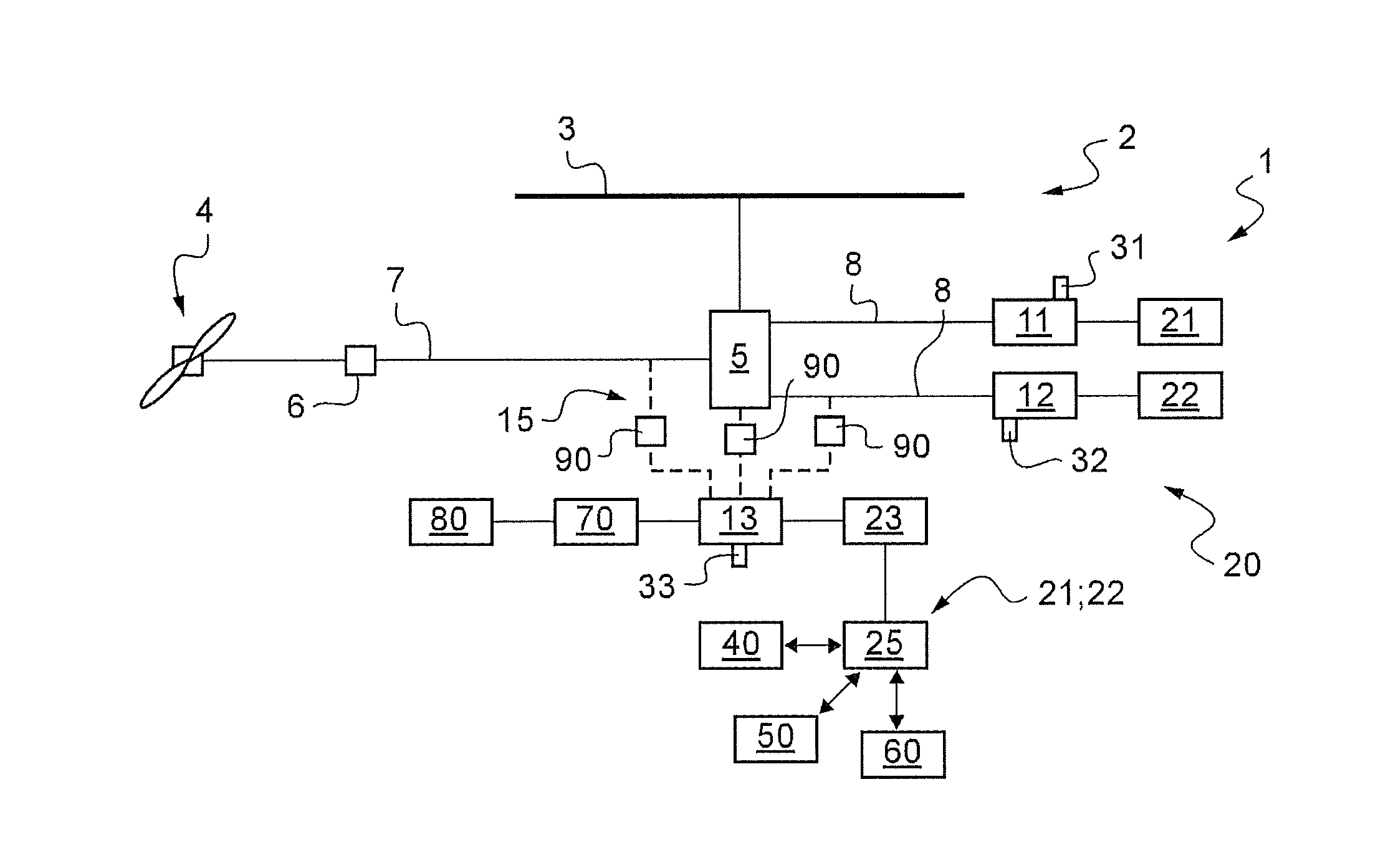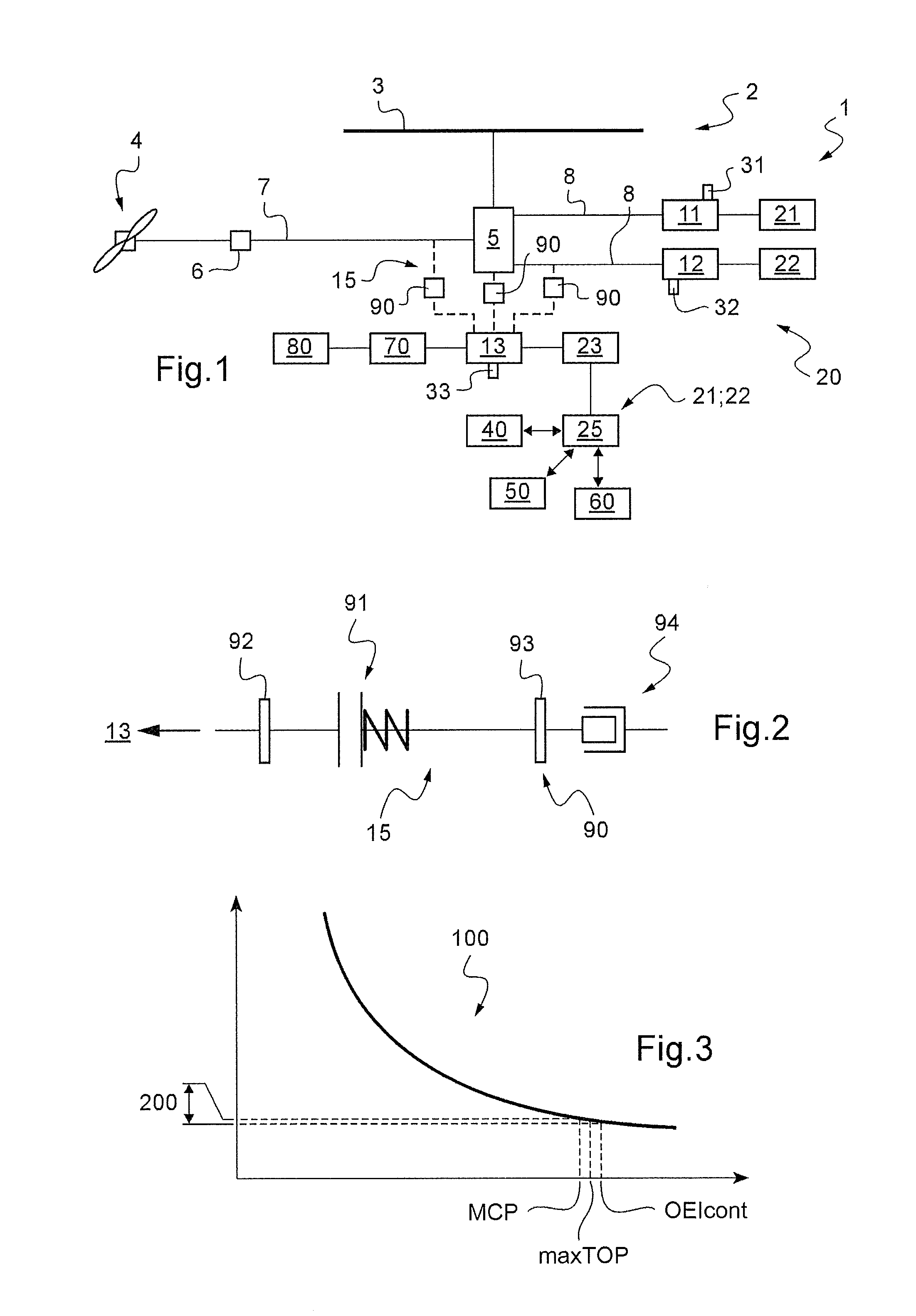Rotary wing aircraft having two main engines together with a less powerful secondary engine, and a corresponding method
a technology of secondary engine and rotary wing aircraft, which is applied in the direction of combination engines, machines/engines, transportation and packaging, etc., can solve the problems of reducing the specific fuel and reducing the specific consumption of a given turboshaft engine. achieve the effect of sufficient electricity and non-negligible weight saving
- Summary
- Abstract
- Description
- Claims
- Application Information
AI Technical Summary
Benefits of technology
Problems solved by technology
Method used
Image
Examples
Embodiment Construction
[0157]FIG. 1 shows an aircraft 1 in diagrammatic manner for the purpose of illustrating the invention.
[0158]The aircraft 1 may have a rotary wing 2 comprising at least one rotor 3 for providing lift and possibly also propulsion. In addition, the aircraft may include at least one additional rotor 4 in particular for controlling yaw movement of the aircraft.
[0159]Consequently, the aircraft 1 has a main gearbox “MGB”5 for driving the rotary wing 2 in rotation, and a secondary gearbox 6 for driving the additional rotor 4 in rotation. A power transmission train 7 connects the main gearbox MGB 5 to the secondary gearbox 6.
[0160]In addition, the aircraft has three turboshaft engines 11, 12, and 13 capable of setting the rotary wing 2 and the additional rotor 4 into rotation via the main and secondary gearboxes 5 and 6.
[0161]More precisely, the aircraft 1 is provided in particular with two main turboshaft engines 11 and 12. These two main turboshaft engines 11 and 12 may be connected to the...
PUM
 Login to View More
Login to View More Abstract
Description
Claims
Application Information
 Login to View More
Login to View More - R&D
- Intellectual Property
- Life Sciences
- Materials
- Tech Scout
- Unparalleled Data Quality
- Higher Quality Content
- 60% Fewer Hallucinations
Browse by: Latest US Patents, China's latest patents, Technical Efficacy Thesaurus, Application Domain, Technology Topic, Popular Technical Reports.
© 2025 PatSnap. All rights reserved.Legal|Privacy policy|Modern Slavery Act Transparency Statement|Sitemap|About US| Contact US: help@patsnap.com


